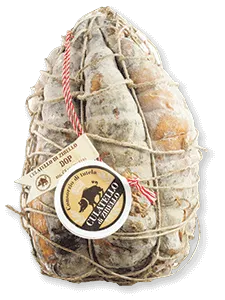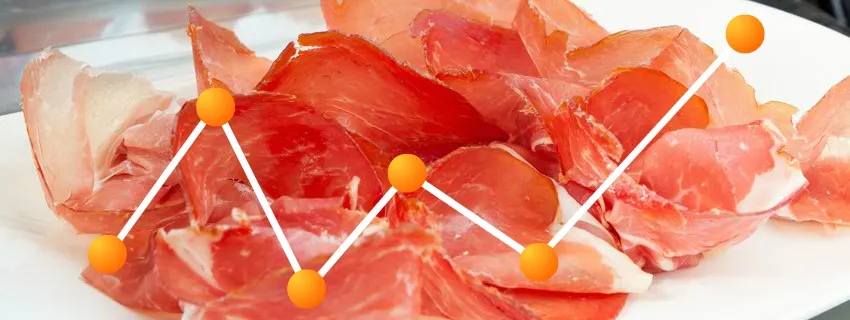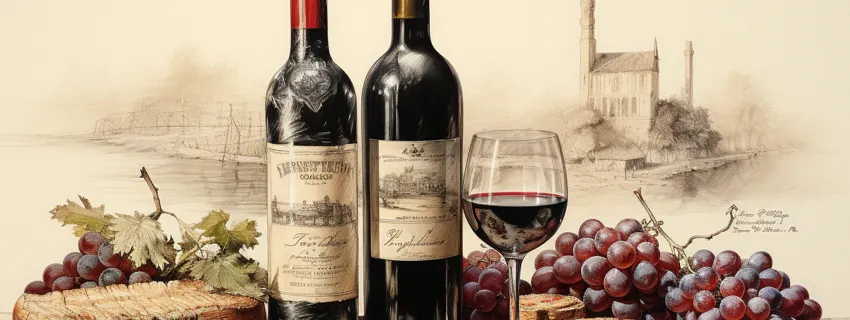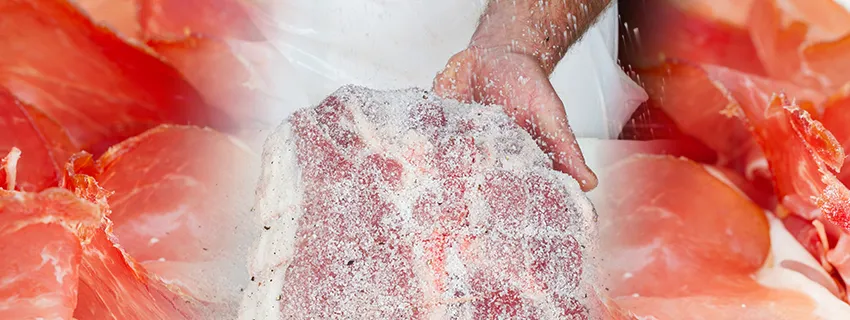Published:
Author: Antonio Maria Guerra
Culatello di Zibello

Culatello di Zibello is a typical specialty from the Lower Parma area, in the Italian region of Emilia Romagna. It’s considered of such value to be known as the ‘King of hams’. Let’s find out its history, the secrets of its preparation, and a great number of curiosities, thanks to the precious collaboration of its most traditional producers.

What is Culatello?
 ‘Culatello’ is a cured meat produced for many centuries in some villages of the Parma province: above all, the Municipality of Zibello. The connection between this specialty and its territory of origin is indissoluble: regarding this, it should be remembered that its unique taste depends, among other things, on the peculiar alternation in this area of hot and dry summers with cold and humid winters (*1).
‘Culatello’ is a cured meat produced for many centuries in some villages of the Parma province: above all, the Municipality of Zibello. The connection between this specialty and its territory of origin is indissoluble: regarding this, it should be remembered that its unique taste depends, among other things, on the peculiar alternation in this area of hot and dry summers with cold and humid winters (*1).
Result of the processing of the finest parts of the pork leg, Culatello has a typical ‘pear’ shape, whose weight can vary from three to five kilos. Its flesh is reddish, surrounded by white fat. The taste is sweet and delicate, defined by a particular aroma developing during the maturing phase thanks to the formation of natural molds on its outer surface, and to the special characteristics of the maturing rooms.
Notes:
*1: Not by chance, the connoisseurs of this specialty, describing its flavor, say it has the ‘aroma of mist’;
In this article we’ll show you the production method currently used for Mortadella. To read it, please follow this LINK.

Calories and nutritional values.
One hundred grams of Culatello di Zibello PDO contain:
Read more
- Calories: 327 kcal;
- Proteins: 29 gr;
- Lipids: 23 gr;
- Carbohydrates: 0.00 gr;
- Fibers: 0.00 gr;
The ham also contains vitamins of the group B. Among the minerals: sodium, potassium, iron and phosphorus. Source: SSICA

The history of Culatello.
It’s quite difficult to establish with precision the date of birth of Culatello. Although some claim it was served in 1332, during the wedding banquet between two scions of the Parma nobility (*1), this assertion is not supported by official documents certifying its veracity. For the same reason, it’s not easy to demonstrate another theory, also very popular, according to which, in the mid-15th century, the specialty was offered as a gift by the Marquises Pallavicino (*2) to Galeazzo Sforza, Duke of Milan.
All this should not surprise too much: the origins of the products closely linked to the rural tradition are almost always shrouded in an aura of mystery. However, it should be emphasized that, in the case of Culatello, it’s possible to hypothesize that these origins date back to the medieval period.
Read more
 The oldest written records come down to us containing an explicit reference to this specialty are the ‘calmieri’ drawn up in the first half of the 18th century on behalf of the Duchy of Parma and Piacenza, also known as ‘Calmieri della carne porcina salata’ (*3): they are a sort of price lists of the cured meats marketed at the time (*4).
The oldest written records come down to us containing an explicit reference to this specialty are the ‘calmieri’ drawn up in the first half of the 18th century on behalf of the Duchy of Parma and Piacenza, also known as ‘Calmieri della carne porcina salata’ (*3): they are a sort of price lists of the cured meats marketed at the time (*4).
It’s worth noting that, at least initially, Culatello was cheaper than fatty salami (‘Salame Grasso’): something that, in time, would have changed. Throughout the nineteenth century, the delicacy enjoyed ever-growing fame, until, in the early 1900s, it found its consecration, starting to be considered the ‘King of hams’.
Notes:
*1: Andrea dei Conti Rossi and Giovanna dei Conti Sanvitale;
*2: The Pallavicino family (or ‘Pallavicini’), was one of the most important in Northern Italy at medieval times. They ruled, among other things, over the marquisates of Busseto and Cortemaggiore;
*3: ‘Price lists of salted pork meats’.
*4: The ‘Calmiere della carne porcina salata’ (1776), mentions two types of Culatello: the ‘Culatello without bone’, essentially a boneless ham, and the ‘Culatello investito’, contained in a natural casing and much similar to the specialty we appreciate today;

Culatello di Zibello
THE MOST TRADITIONAL PRODUCERS
This article is the result of collaboration between WebFoodCulture and the Consorzio di Tutela Culatello di Zibello: organization gathering the most traditional producers of the famous specialty.


The pigs for Culatello di Zibello.
The Product Specification of Culatello di Zibello, whose respect is guaranteed by the Consorzio, concerning the pigs used to make the ham, refers to the Product Specifications of two other famous Italian specialties: the Prosciutto di Parma and the Prosciutto di San Daniele.
Read more
Its rules are very important, specifying, for example, the pig breeds accepted: they are the Large White, the Landrance, and the Duroc. The document states that only the muscular part of their thigh can be used: this, once trimmed properly, must get the typical ‘pear’ shape. Extremely important is the designation of the breeding area, which is limited to the territories of the Italian regions of Emilia-Romagna and Lombardy.

The ‘King of cured meats’.
Culatello is also known as the ‘King of hams’: a bombastic title, there’s no doubt, due to the value, the typicity, and the ancient tradition of an ‘excellence of taste’ that, still today, is prepared by hand. It’s especially this last detail to make it a ‘limited edition’ specialty.
Read more
The Consorzio has in fact preferred to focus on quality rather than quantity. This choice ended up affecting the price which turns out to be quite high but entirely justified.
The land of Culatello.
The zone of production of Culatello is of fundamental importance: its peculiar climatic features contribute in fact to the development of the organoleptic characteristics that make this specialty so unique.
Read more
It’s the area surrounding the Municipality of Polesine Zibello (*1) and other six neighboring municipalities, namely Busseto, Soragna, San Secondo, Sissa, Roccabianca, and Colorno. Places that are an integral part of the ‘Bassa Parmense’: a large territory, crossed by the famous river Po, that has always been considered one of the most important Italian locations from an agri-food point of view.
Note:
*1: In 2016, the Municipalities of Zibello and Polesine Parmense have merged, giving birth to the Municipality of Polesine Zibello;

Culatello di Zibello: pairings.
True Culatello enthusiasts love to taste this ham alone (in ‘purezza’) or, at most, accompanied by white bread and a curl of butter. The people of Zibello often eat it together with the mixed pickled vegetables produced in the area. However, this does not exclude that the specialty can give its best also in more elaborate preparations such as, for example, dumplings, risottos, and exquisite tagliolini.

The right wine.
Read more
- By medium-bodied red wines with good acidity and aromatic persistence (e.g. Sangiovese di Romagna, Fortana del Taro, or Lambrusco) when served, for example, on a buttered crouton, on a ‘torta fritta’, or as an ingredient in a dish of tasty tagliolini with parmesan.

Culatello di Zibello: the museum.
Perhaps not everyone knows that there is an actual museum dedicated to Culatello ham, housed in the Antica Corte Pallavicina, a medieval manor that once belonged to the noble Pallavicino family.
Read more
The visitor is accompanied along a route, explaining the history of the famous specialty, its close connection with its territory of origin, the technique and tools for its preparation, and the steps of seasoning. For more information, please visit the official website of the Museum.

The festival of Culatello di Zibello.
For more than thirty years, between May and June, in the Municipality of Zibello, a festival has been held dedicated to what is considered by many to be the ‘King of hams’: Culatello.
Read more
The event attracts thousands of passionate food lovers who gather to celebrate, and taste, the famous specialty. More information about the festival can be found by accessing its official website: www.festadelculatello.it .

Consorzio di Tutela del Culatello di Zibello: contacts.
Address: Piazza Giuseppe Garibaldi, 34, 43016 Polesine Zibello (Parma) – ITALY
Official website: Click here
Mail: Click here
Tel.: +39 0524 99131
Copyright information.
The images displayed in this page belong to WebFoodCulture and to Consorzio di Tutela del Culatello di Zibello.

